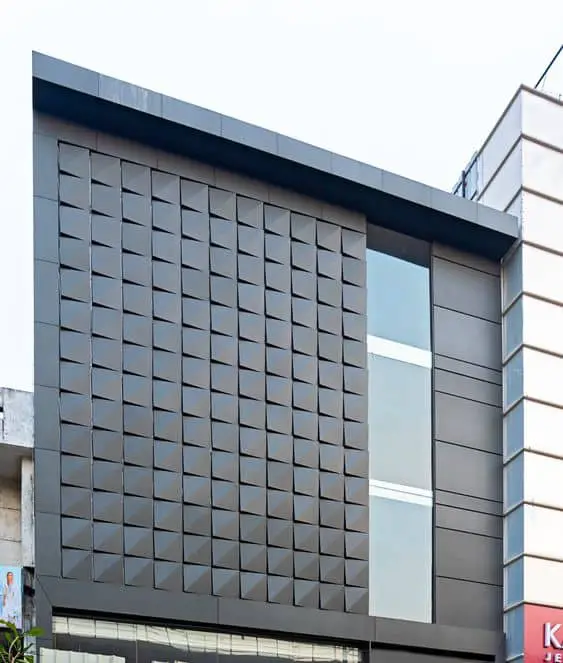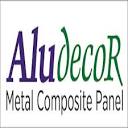Applications, Features & Installation of Glossy ACP Sheets

As the construction and cladding industry is shifting towards innovation and sustainability, the popularity of the acp sheets is ever-rising. The ideal combination of function and aesthetics is making the Aluminium Composite Panels, a revolutionizing material in a broad category of architectural applications, both interior and exterior.
What are Aluminium Composite Panels?
Aluminium Composite Panels also known as ACP are sandwich panels where a polyethylene core is compressed between two thin sheets of aluminium. In modern architecture, this unique material has made a place of its own owing to its sturdiness, design flexibility, weather resistance, and more.
Why Glossy ACP Sheets?
Amongst the popular types of ACP, glossy acp sheets are loved by interior designers and architects alike. The glossiness is achieved by glazing the surface of the ACPs with stunning colours that can be further customized by designs and textures.
The glossy finish is instantly eye-catching and adds to the aesthetic appeal of the space while the sturdiness and durability of the metal make it resistant to stains and scratches.
What are the features of Glossy ACP Sheets?
Some of the most sought-after features of glossy acp sheets are:
- As compared to glass which is more prone to breakage, this aluminium panel has a promising visual effect, better in unit proportion than painted glass, and makes long-distance transportation hassle-free.
- ACP sheets are popular for their durability as well as their weather-resistant quality. The top aluminium layers provide safety from external damages like corrosion while the internal PE core gives stability and strength.
- Glossy ACP sheets are versatile and are available in a wide range of colours and textures. This allows the designers and architects to choose as per their functional and design requirements.
- Aluminium is a highly flexible and lightweight metal that makes it easy to cut, bent, and re-shape as per the requirement. Designers can use it to create new designs or give creative shapes as per their liking. Moreover, the per square meter of acp sheet price is comparatively less in the long run than other common cladding materials.
What are the applications of Glossy ACP Sheets?
The enhanced durability of the aluminium along with the lustrous surface makes the glossy acp sheets an ideal option for internal and external designs for buildings and projects. Let’s take a look at the various applications of glossy aluminium composite panels.
External claddings and Façade:
A component of modern architecture, glossy ACPs are most commonly used as external claddings for buildings due to their visually appealing feel and glam-up look. The highly durable metal can withstand UV radiation, and extreme weather conditions and at the same time, maintain its shine and finish like new.
Interior Designing:
Glossy finish ACP sheets also have high demand in interior designing. The broad range of monochrome to bright colour palettes adds to the aesthetic appeal. It is mostly used for false ceilings, wall partitions, panels, kitchen cabinets, and column covers. The shiny surface reflects light adding a feeling of ample space and vibrancy.
Advertising and Signage:
Glossy finish composite panels look attractive for their lustrous surface and ability to reflect light making them visible from a distance. Due to this, gloss finish ACP sheets are the most preferred choice when it comes to advertisements and signage. The smooth surface offers a great surface for printing graphics and other designs looking great for hoardings and billboards.
Furniture:
ACPs are largely used in furniture to give it a stylish and durable edge. Furniture like table tops, cabinets, shelves, etc are more prone to scratches and stains. Glossy ACPs structural rigidity combined with lustrous and vivid colour payoff makes it resistant to day-to-day impact while keeping it looking like new.
What is the process of installation?
The installation process of glossy acp sheets is just like any other ACP sheets and includes a few steps to make sure that it is done correctly. Let’s take a look at the process:
Preparing the surface:
Before starting the installation process, ensure that the surface is dry, clean, and free from dust or debris. In case, of any sharp objects or protrusions, make sure to remove them to avoid damaging the ACP sheets. Measure the dimensions of the area where you will install the ACP. You will also get an idea of the panels required. The surface must be sturdy enough to support the panels.
Framing and Preparing Substructure:
A proper framing system ensures that the ACP is structurally sound and aligned with the framework. The design and spacing of the substructure depend on the installation requirements and are mostly recommended by the manufacturer.
Installation of the Panels:
Fix the ACP sheets securely to the substructure. There are a variety of ways with which installation of the panels are done. However, for Aludecor, MFR or Male Female Rainscreen system is followed. This helps to create a flat surface that is aesthetically pleasing. In the MFR systems, a cavity or a gap is present between the structural wall and the external cladding. This gap is essential for ventilation and acts as a drainage plane. The cladding material like the glossy acp sheets is attached to the structure using brackets, rails, and clip combinations. This is when the MFR attachment systems come to play. The male or the joint part which is mostly a protruding element like a hook, located on the edge of the cladding panel gets locked with the female part, a slot or groove interlocking it securely.
Finishing Touch:
After the installation is complete, remove the protective film from the surface. Ensure the surface is clean from dust and debris for that seamless glaze. Make sure that the installation is on point without any loose panels, irregularities, etc.
Conclusion
Although the features and applications of the glossy acp sheets are mostly the same, the installation process might slightly vary depending on the manufacturer. For specific guidelines on installation consulting the manufacturer is highly recommended along with seeking professional assistance for the installation process.

